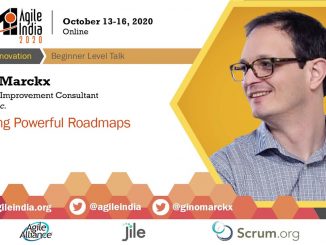Delivering value with the Scrum framework for Agile product and project management approach.
One of the key element of Agile Software Development approaches like Scrum is to emphasize delivering quickly business value over having a long-term rigid plan. In his book “Project Myopia”, Allan Kelly discusses the issue of identifying and delivering value.
“How well is your delivery team doing?” That seems like a straightforward question for an Agile team, but it is more complicated that it might sound at first. Do we know what it means to “do well” or is it one of those things that is different to everyone?
“OKRs” is the acronym of “Objectives and Key Results.” This is a collaborative goal-setting tool used by teams and individuals to set goals with measurable results. In his book “Succeeding with OKRs in Agile”, Allan Kelly explains why he considers that “OKRs have the potential to reawaken the early ambition and drive inherent in agile. This time managers can join in too, not as obstacles to change, or change drivers, but as partners focused on the same outcomes for a greater purpose.”
Delivering business value is certainly a major goal when you adopt an Agile approach like Scrum. If determining business value is already difficult inside an organization, the topic is even more complex when the project is performed by an external Agile provider. This article lists some of the important questions that should be answered about delivering value when you are contracting Agile projects to a consulting company.
This video will provide you with practical techniques on how to build a powerful roadmap for your product or service, one that allows any Agile organization to get valuable feedback from their customers and deliver business value.
The life of an agile digital creator is riddled with decisions. How do you decide which new features to implement, and which ones to ignore? How do you select the customers or clients you would enjoy working with? How do you choose an employee who is the best fit for your team?
Metrics are an important part of the Agile software development approaches like Scrum. They are however, like velocity, more often focus on the performance of the delivery team. What about the customers? In this article, Fabio Gasparri discusses Key Performance Indicators (KPIs) that will matter for the clients.







